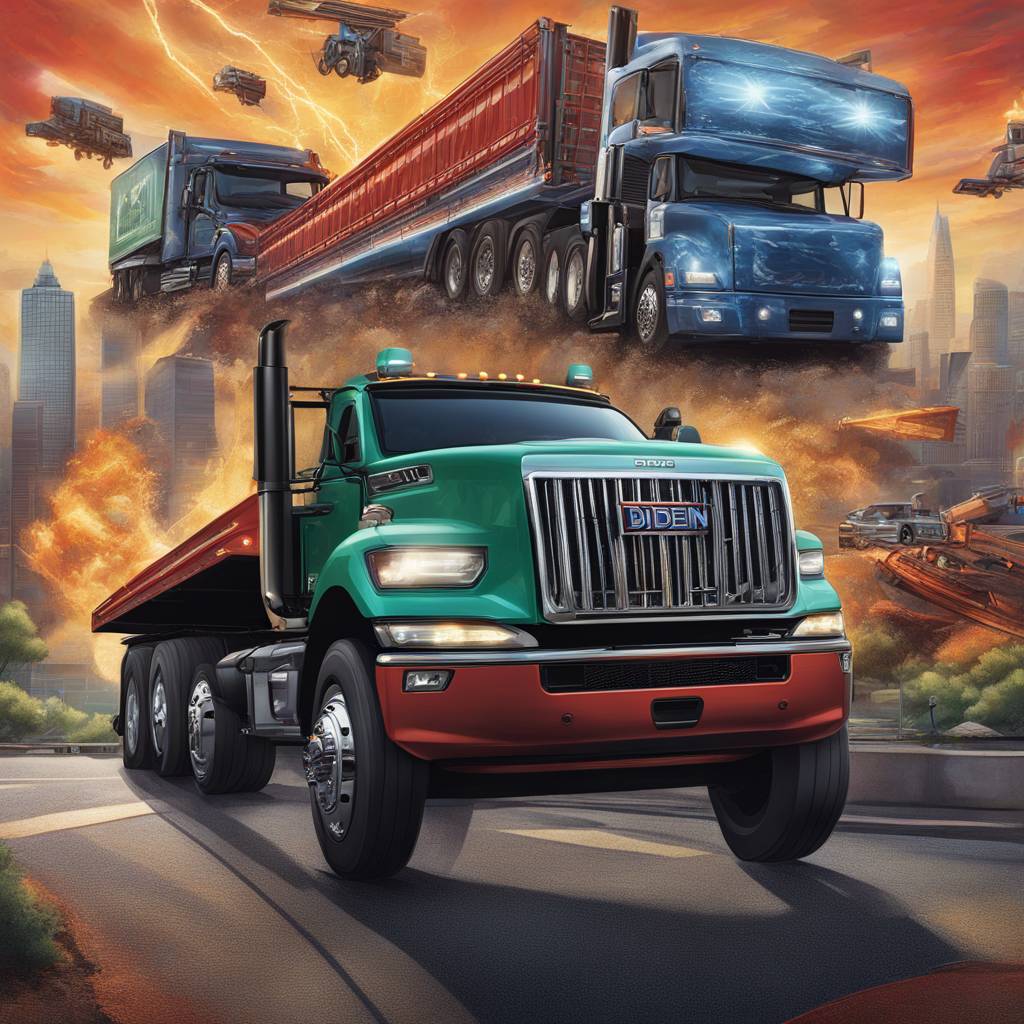The Biden administration unveiled new regulations aimed at boosting sales of electric and other zero-emission heavy vehicles in an effort to combat climate change. The Environmental Protection Agency projects that by 2032, 25 percent of new long-haul trucks and 40 percent of medium-size trucks in the United States could be nonpolluting. The regulation covers over 100 types of vehicles, from tractor-trailers to ambulances and garbage trucks, and requires manufacturers to limit pollution from trucks in their product lines over time, starting in 2027. Options for compliance include using technologies like hybrids or hydrogen fuel cells.
These new regulations on heavy trucks come after a rule finalized last week that aims to ensure that a majority of new passenger cars and light trucks in the U.S. are all-electric or hybrids by 2032. Together, these regulations are meant to reduce carbon dioxide emissions from transportation, the largest source of fossil fuel emissions in the country. The transition to cleaner trucks is expected to mitigate air pollution in communities near freight truck routes and reduce greenhouse gas emissions by a billion tons by 2055. The regulations are part of President Biden’s plan to cut U.S. emissions by half by the end of the decade.
While electric passenger vehicles have become more popular, electric trucks are still a small market due to factors like high upfront costs, limited charging infrastructure, and reduced cargo capacity. There are concerns about the feasibility of widespread adoption of electric trucks, as the charging infrastructure is significantly lacking compared to that for electric cars. Truck manufacturers are also facing challenges in meeting the regulations, and some concessions were made in terms of compliance deadlines to ease the transition.
The new regulations aim to transform short-haul vehicles first, such as school buses, garbage trucks, and moving vans, which have shorter daily travel distances and return to the same spot to recharge overnight. At least two-thirds of heavy truck journeys are within the range of current electric trucks. This could lead to several benefits, including reduced pollution and greenhouse gas emissions, especially in urban areas. Companies are beginning to invest in electric truck fleets, and federal subsidies are available to support the transition.
Despite the challenges and skepticism from some in the trucking industry, advancements in technology and support from the government are making the transition to electric trucks more feasible. Companies like Frito-Lay and 4 Gen Logistics are already utilizing electric trucks in their operations, and federal funding for charging infrastructure and tax credits for electric trucks are available. The ultimate goal is to significantly reduce emissions from heavy-duty trucks and improve air quality in communities near freight routes. By investing in electric trucks and charging infrastructure, the transportation industry can make significant strides in addressing climate change and reducing pollution.


